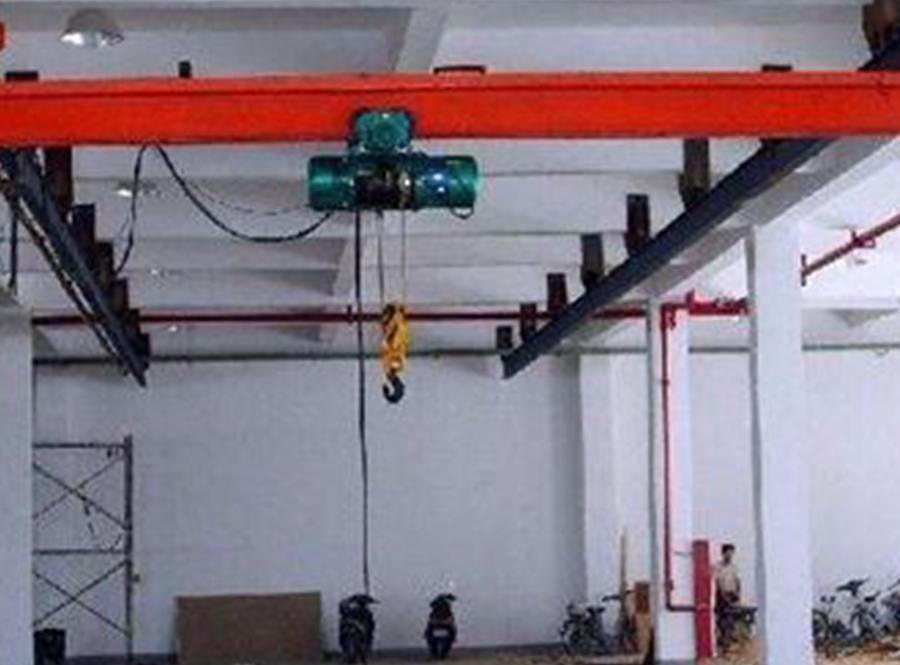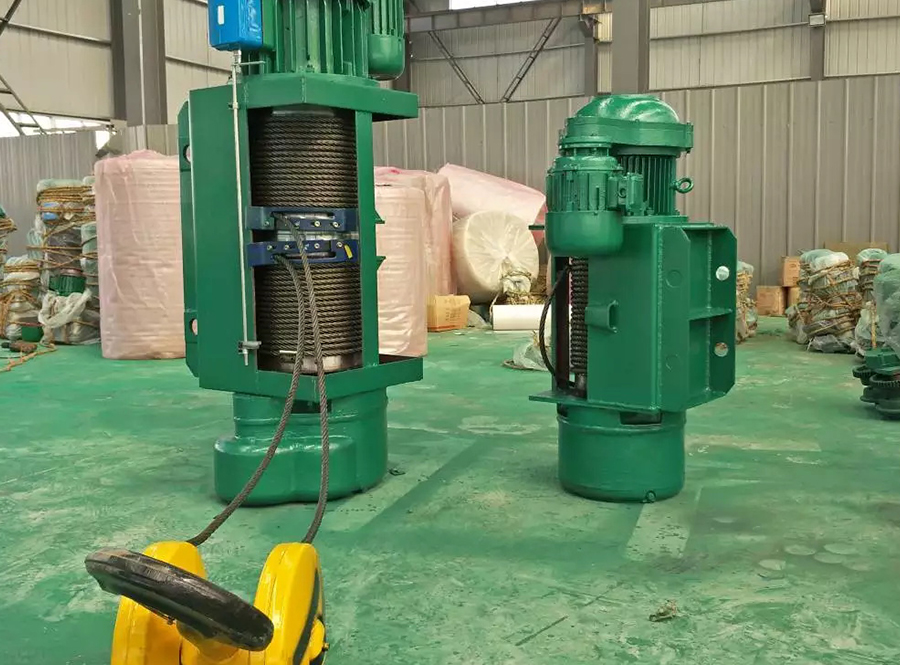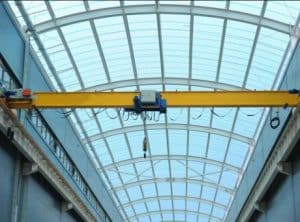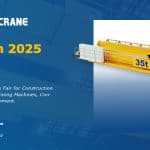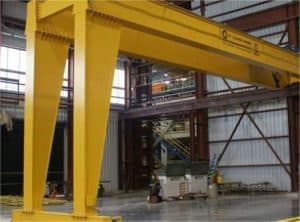Industry electric underhung bridge crane is a major lifting and transportation equipment in the production logistics process, and its utilization efficiency is related to the production rhythm of the enterprise. At the same time, underhung bridge cranes are also dangerous special equipment and may cause harm to people and property in the event of an accident. The driver of the overhead crane is the most active and critical factor in the use of the overhead crane. The driver’s ability to operate the grúa aérea is very important and is a major issue directly related to the company’s efficiency and safe production. The author summarizes his own practical experience in operating bridge cranes and puts forward the following operating experience based on the characteristics of bridge cranes.
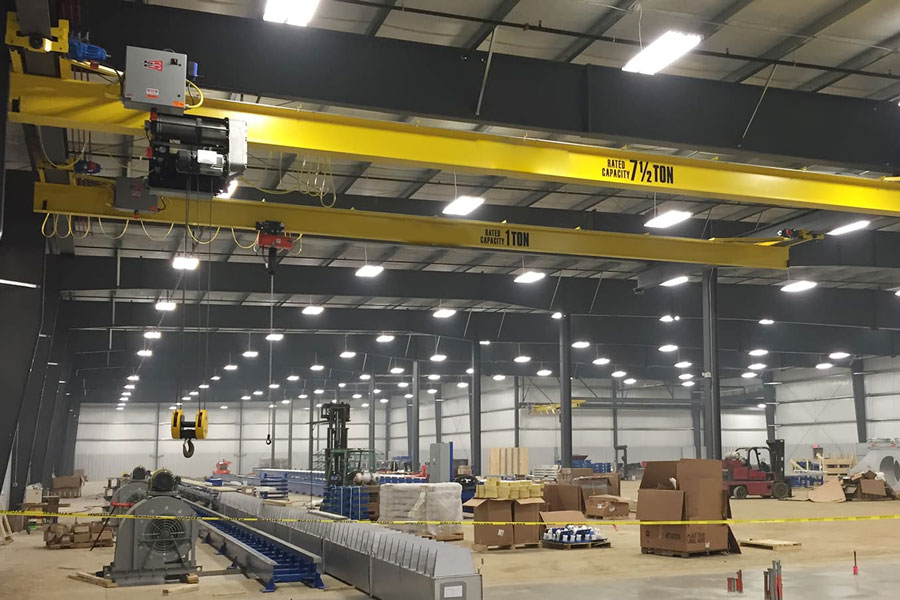
1. Master the characteristics of SEVENCRANE underhung bridge crane and work objects
Para operar correctamente un puente grúa, es fundamental dominar elementos clave como el principio, la estructura, el rendimiento, los parámetros y el proceso de operación del equipo. Estos factores clave están estrechamente relacionados con el uso y la operación del equipo.
1. Grasp the principle of equipment
Una comprensión minuciosa de los principios es el requisito previo y la base para un buen funcionamiento del equipo. Solo cuando se dominan los principios de forma clara y profunda, se establece la base teórica, la comprensión puede ser clara y profunda y el nivel de funcionamiento puede alcanzar una cierta altura.
2. Domine cuidadosamente la estructura del equipo.
Para dominar con precisión la estructura del equipo es necesario comprender y dominar los principales componentes estructurales del puente grúa. Los puentes grúa son equipos especiales y sus estructuras tienen sus propias particularidades, que deben comprenderse y dominarse con atención. Dominar con precisión la estructura del equipo es la clave para familiarizarse con el equipo y controlarlo hábilmente.
3. Domine cuidadosamente el rendimiento del equipo
To carefully grasp the performance of the equipment is to master the technical performance of each mechanism of the heavy duty underhung bridge crane, such as the power and mechanical performance of the motor, the characteristic braking state of the brake, and the safety and technical performance of the safety protection device, etc. Only by mastering the performance can we better take advantage of the situation, scientifically control the equipment, delay the deterioration process, and prevent and reduce the occurrence of failures.
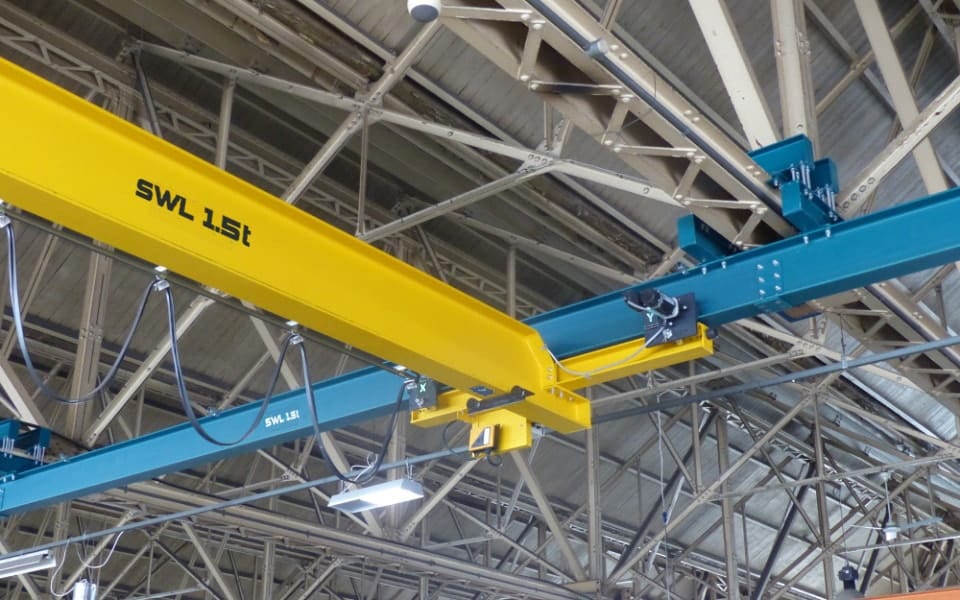
4. Domine cuidadosamente los parámetros del equipo
Carefully mastering the equipment parameters means that you must understand and master the main technical parameters of the bridge crane, including work type, work level, rated lifting capacity, mechanism working speed, span, lifting height, etc. The technical parameters of each piece of equipment are often different. The technical parameters of the equipment are different, and there are differences in their performance. Careful knowledge of the exact parameter values for each overhead crane is critical to operating the equipment accurately.
5. Dominar cuidadosamente el proceso de trabajo
El dominio minucioso del proceso de operación significa dominar los pasos y procesos de la operación de producción que se realizan con la grúa puente y esforzarse por lograr el mejor diseño y el funcionamiento razonable de los procedimientos de elevación y transporte utilizados en varios procesos. Solo si dominamos con destreza el flujo del proceso podemos dominar las reglas de operación, tener confianza y operar libremente, a fin de mejorar la eficiencia, la seguridad y la confiabilidad del trabajo.
2. Captar los cambios de estado del equipo
El puente grúa es un equipo especial, y su funcionamiento debe garantizar el estado técnico y la integridad del mismo. Durante el funcionamiento de los puentes grúa, estos se ven afectados por factores como las condiciones de producción y el entorno. Las funciones y el estado técnico determinados durante el diseño y la fabricación originales pueden seguir cambiando y reducirse o deteriorarse. Por lo tanto, el conductor debe comprender cuidadosamente los cambios de estado del equipo, realizar un buen control de funcionamiento del puente grúa y realizar el mantenimiento y las inspecciones con cuidado para prevenir y reducir las fallas.
1. Preste atención a los cambios de estado del equipo.
El equipo necesita un mantenimiento cuidadoso. Limpie, limpie, lubrique, ajuste y apriete todas las partes del puente grúa regularmente de acuerdo con los requisitos del sistema de mantenimiento. Trate los diversos problemas que ocurren en cualquier momento de manera oportuna, mejore las condiciones de funcionamiento del equipo, elimine los problemas de raíz y evite pérdidas indebidas. La práctica ha demostrado que la vida útil del equipo depende en gran medida del grado de mantenimiento.
2. Carefully grasp the status changes of the underhung cranes
Comprender con atención los cambios de estado del equipo y ser capaz de comprobarlo. Entender y dominar las partes del puente grúa que deben inspeccionarse con frecuencia y dominar los métodos y medios de inspección de las partes.
3. Habilidades para monitorear equipos a través de los sentidos.
Habilidades para monitorear equipos a través de los sentidos: vista, oído, olfato, tacto y tacto. "Visual" significa usar la vista para observar la superficie del equipo y detectar defectos y fallas intuitivamente. "Escuchar" significa confiar en el oído para detectar el estado del dispositivo. El conductor opera en la cabina y no puede ver las condiciones de funcionamiento del equipo en el puente. La audición se convierte en un importante medio auxiliar de seguridad. Cuando los aparatos eléctricos o equipos mecánicos funcionan con normalidad, generalmente solo emiten sonidos armónicos muy leves, pero cuando fallan, producen ruidos anormales. Los conductores experimentados pueden determinar la ubicación aproximada de la falla basándose en los diferentes cambios en el sonido. Por lo tanto, identificar enfermedades mediante el sonido debe ser una de las habilidades internas de un conductor. "Olfato" significa confiar en el sentido del olfato para detectar el estado del dispositivo. La bobina eléctrica del puente grúa se incendia, y las pastillas de freno humean y emiten un olor acre que se puede percibir a distancia. Si detecta algún olor extraño, detenga el vehículo inmediatamente para una inspección y así evitar incendios u otros accidentes graves con el equipo. El tacto se utiliza para diagnosticar el estado anormal del equipo mediante la palpación. Los conductores a veces detectan condiciones anormales en el equipo y pueden diagnosticar y determinar la causa del mal funcionamiento. El tacto se refiere a la sensación. Los conductores perciben información de todos los aspectos al operar, y la experiencia les indicará qué es normal y qué es anormal. Si los conductores perciben una sensación diferente a la habitual en el trabajo, deben identificar inmediatamente la causa para evitar problemas futuros.
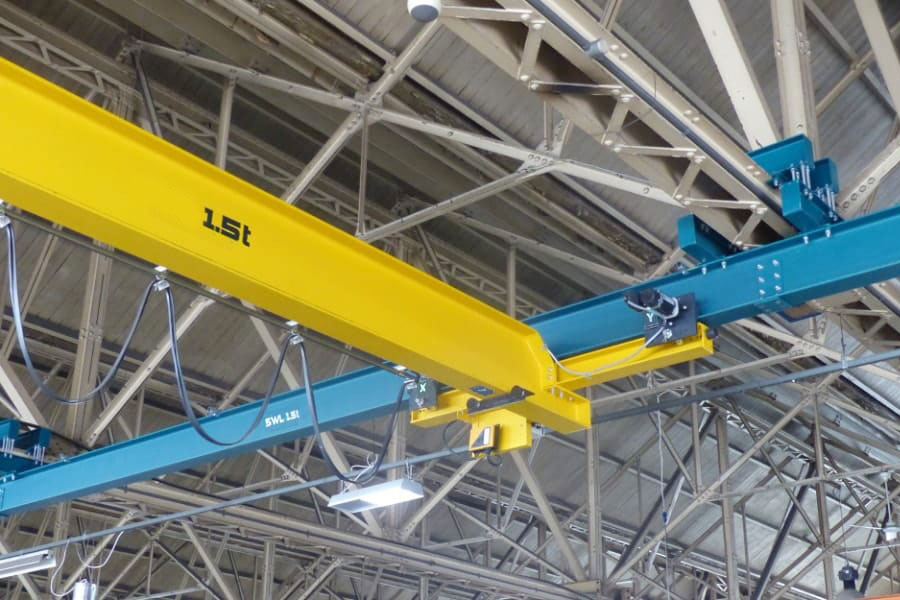
In short, it is the responsibility of the puente grúa suspendido with complete runways driver to master and operate the overhead crane proficiently. SEVENCRANE has accumulated many years of operating overhead cranes, summarized and explored the above experience, and conducted an explanation and analysis, which is not comprehensive. We hope that this can attract criticism and guidance from colleagues and promote the common improvement of overhead crane drivers’ operating skills.









